41 Hot rocks and not so hot rocks
In academics (and in life in general), one occasionally encounters people who are rude and seem to enjoy ‘putting down’ others rather than engaging them in constructive discussions. Learning to tolerate and deal such personalities can be challenging, even if you are right.
In fall 1974 (my last year in graduate school), I was invited to give a lecture (“Museum Lunch”) at the Museum of Vertebrate Zoology, UC Berkeley. For a grad student, this was an honor. But for a grad student who had previously given only one ‘departmental’ seminar, this was also unnerving.
I talked about my thesis research on the costs and benefits of behavioral thermoregulation. In the audience were three senior biologists who had done important work on behavioral thermoregulation. So at the end of my seminar, I spent a few moments outlining key unanswered questions in this field.
I pointed out that our understanding of the ecological and physiological consequences of lizard thermoregulation was based exclusively on what lizards did when they were active, aboveground, and thus observable. However, I noted that lizards (at least those in the temperate zone) are active for only a small fraction of the year, are thus sequestered most of the year, and may well experience body temperatures different from their preferred body temperatures. Consequently, to gain a comprehensive understanding of thermoregulatory behavior and thermal physiology, I suggested that we needed to study the thermal biology of inactive as well as active lizards. To me this seemed (and still does seem) uncontroversial.
Paul Licht, a young but already famous physiological ecologist, was in the audience. Paul had done pioneering work on the sensitivity of physiology to temperature. He had shown that the ‘optimal’ temperature for some lower-level traits (e.g., muscle twitch tension) correlated (but not always coincided) with the ‘preferred body temperature’ that a lizard species selected in a thermal gradient. This was an important result, as it established a direct physiological benefit of thermal preferences and behavioral thermoregulation.
At the beginning of the question period, Licht said that my idea of studying the thermoregulation of inactive lizards was absurd. He said that if he were asked to review a grant proposal on this topic, he would reject it.
Licht’s tone and words were argumentative and agressive, but he was often argumentative and self-assured. I tried to argue with him, but he would not budge. I tried again later when we met one-on-one in his office, and still he not budge. He remained adamant that my ideas were not worthy of exploring.
Some years later, I visited Steve Arnold and Lynne Houck at Eagle Lake, in the eastern High Sierra of California, where Steve was conducting a long-term study of the ecology of garter snakes. Steve and I met when we were undergraduates at UC Berkeley (~ 1965), and Lynne and I met in 1975.
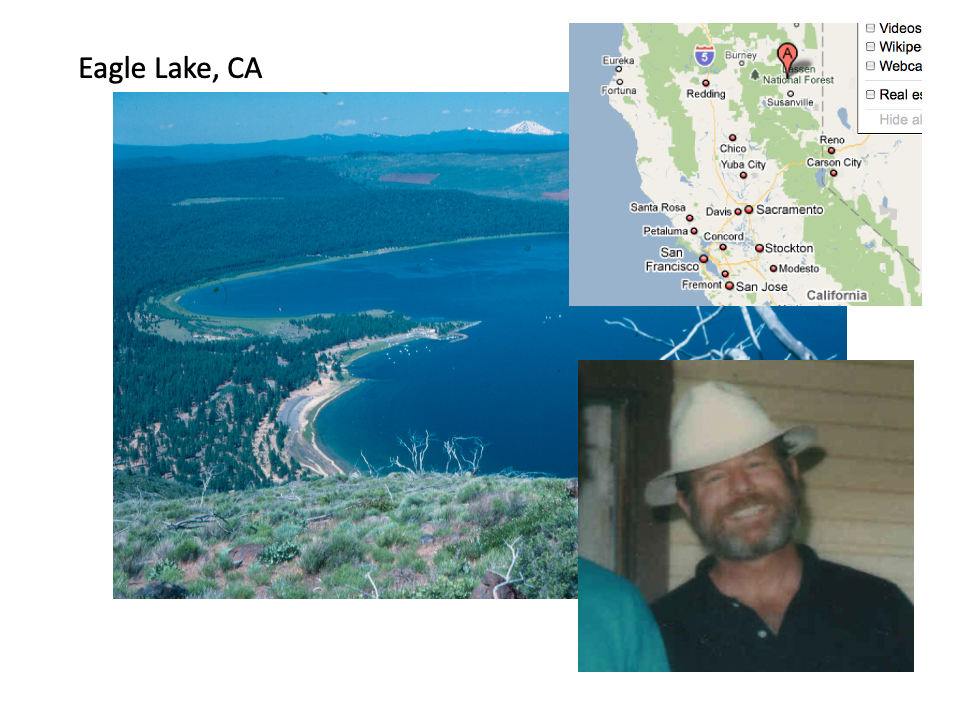
Steve mentioned that his snakes were active and above ground only on occasion. Most of the time, even in summer, they were sequestered under rocks or boulders surrounding Eagle Lake.
I realized that this was a perfect opportunity to study retreat-site selection by garter snakes, and that this would be a perfect way to respond to Licht’s intransigence. Specifically, we could directly evaluate the thermal and ecological consequences to snakes of the rocks they chose (or ignored) for retreats, and then decide whether those consequences were ecologically important (my view) or not (Licht’s presumed view).
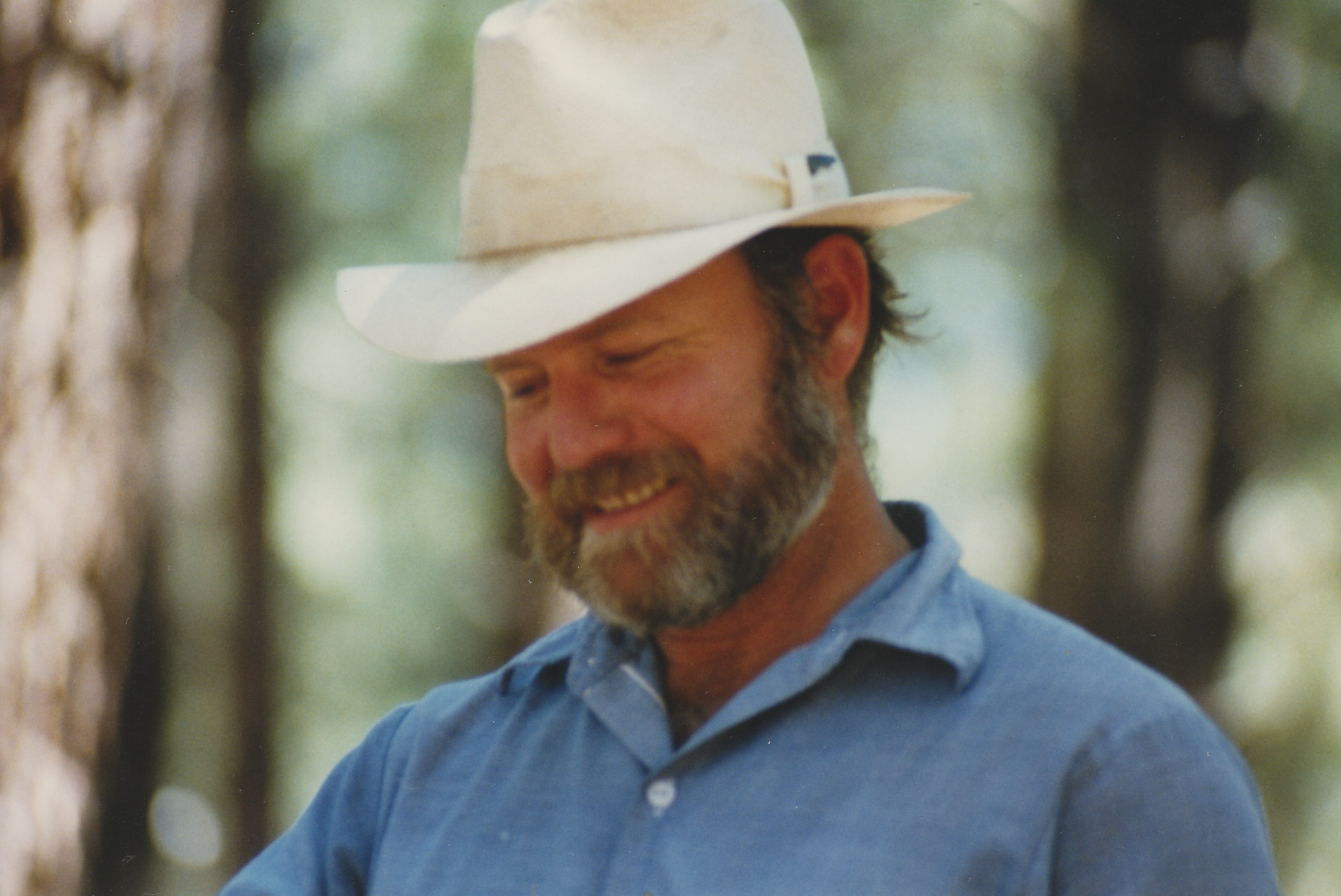
Steve and I established a site that had rocks and boulders of various sizes (small, medium, large) and shapes (flat, rounded). We called our site “Snake Henge.” Steve elegantly laid the boulders out in a Latin Square design, and we placed two thermocouples (edge or center of the rock) under each rock. Then every hour for the next 24 h, one of us recorded the temperature of the rocks (we did not have data loggers). These under-rock temperatures would indicate the potential (“operative”) body temperatures of a snake that had retreated under that rock.
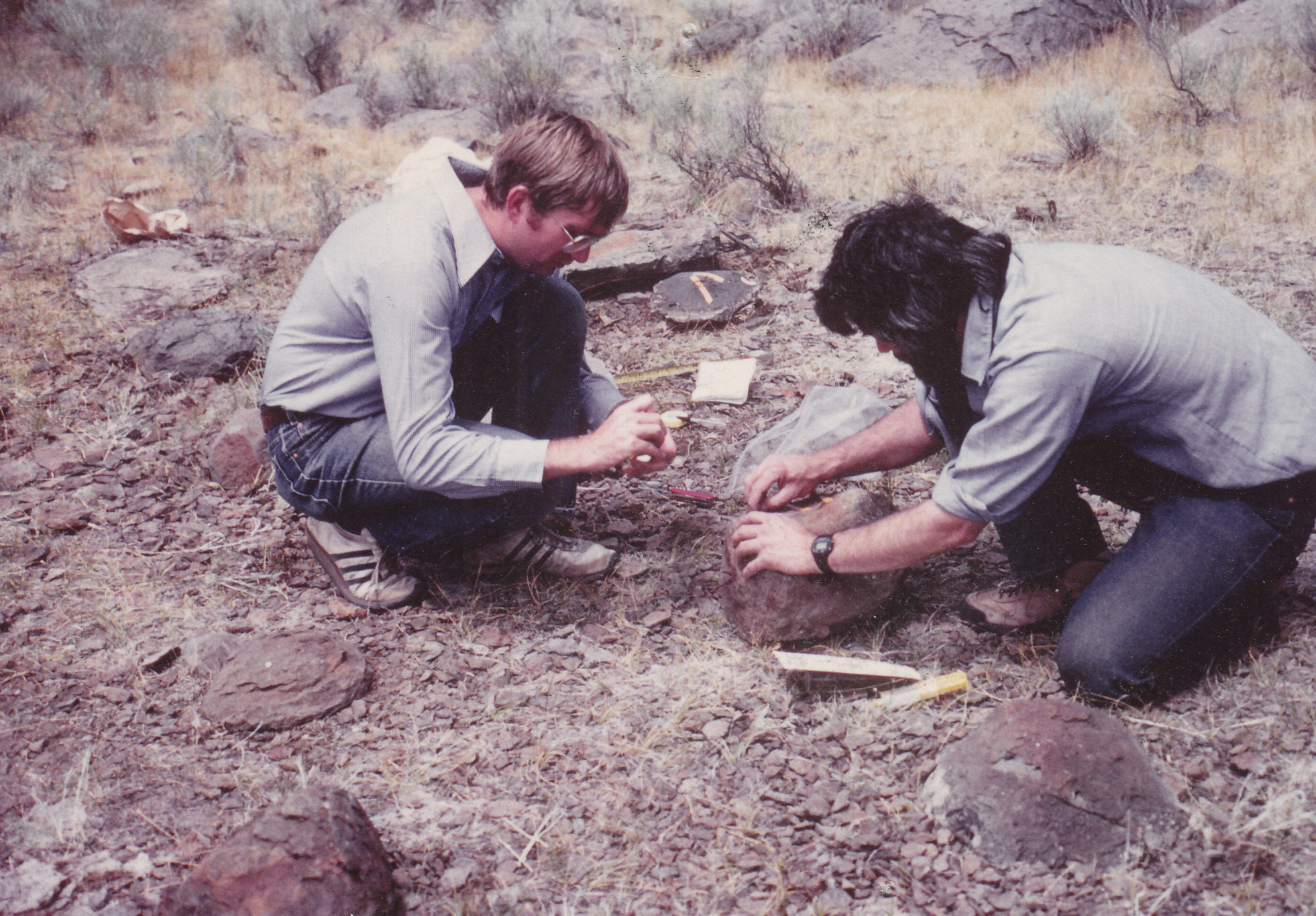
We soon combined forces with Charles (“Chuck”) Peterson, who was a postdoc with Steve, skilled at radio-telemetry, and deeply knowledgeable about snakes and thermal biology. Chuck could use radio-telemetry monitor body temperatures of snakes over time.
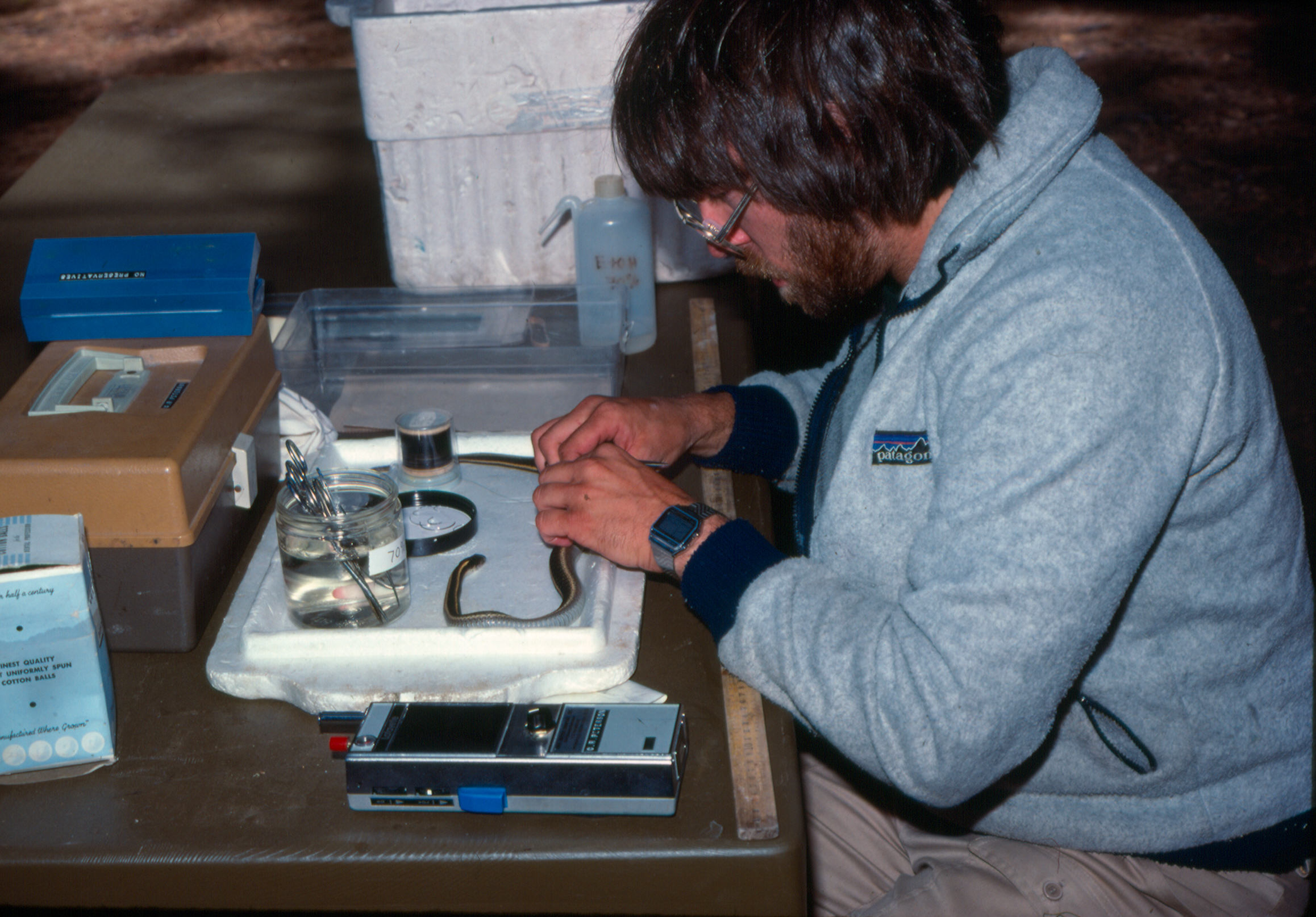
Warren Porter, who pioneered the biophysical ecology of lizards and other animals, also joined us. Warren set up a battery of micro-meteorological instruments and used the resulting data to predict “operative body temperatures” (that is, equilibrium temperatures) of snakes under rocks, below ground, or exposed above ground.
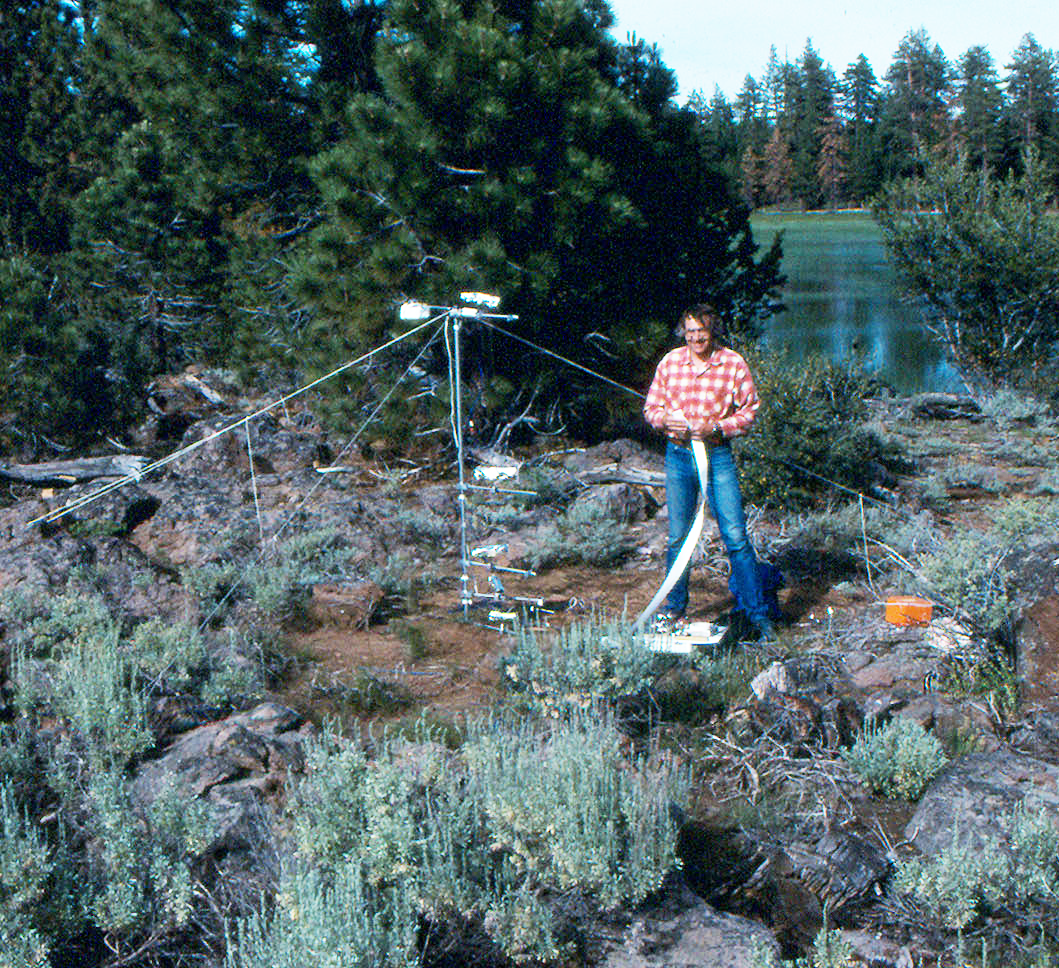
We found that small, flat rocks would be lethal to snakes in summer but that large round boulders would be too cold. However, medium-sized rocks (20 - 40 cm think) were “just right.” In fact, a snake under such medium-sized rock could maintain a body temperature within its preferred temperature zone for nearly the entire day and night. Furthermore, we predicted how rock size and shape would influence net energy gain and digestion of snakes.
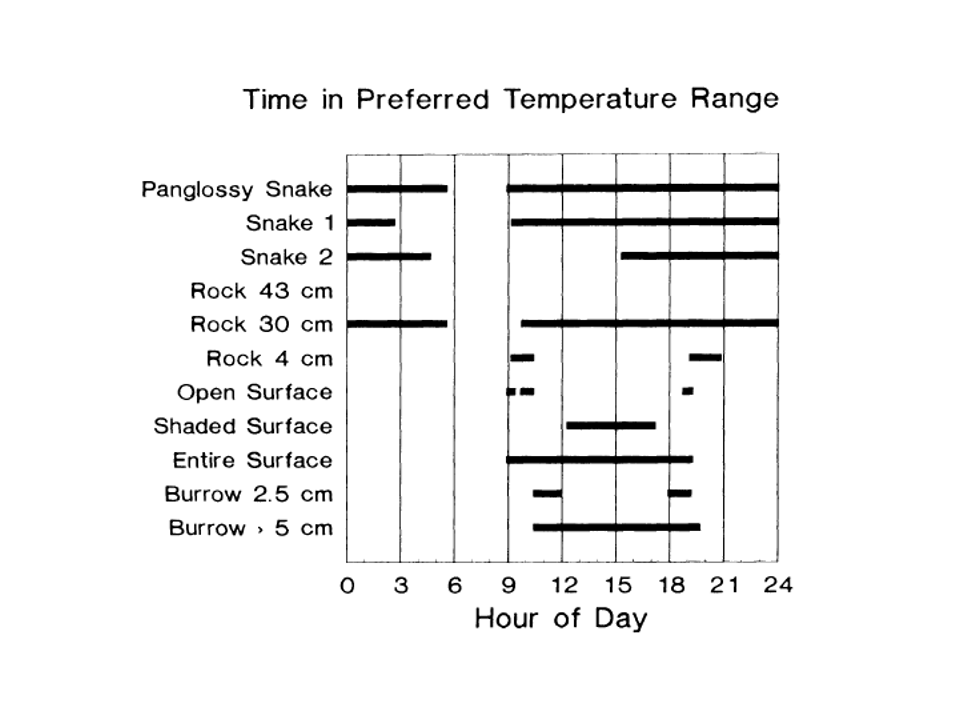
I will skip the details, but this project was fun to conceive, execute, and write. All along we’d given our future paper a temporary title, (“Hot rocks and not so hot rocks.”) [The title was derived from Hot Rocks, a 1971 album by The Rolling Stones.] We wanted to submit to Ecology, but knew that this prestigious journal never published papers with humorous titles. Consequently, we were worried that the journal might insist that we alter the title. So before submitting the paper, I wrote to the Managing Editor and asked whether Ecology had a policy against humorous titles. He wrote back saying no and that it would be up to the Associate Editor whether to accept our title. Fortunately, Ken Nagy was the assigned AE and approved our title, even though one reviewer objected.
This was one of the first studies to predict several ecological consequences of behavioral thermoregulation, and it opened inactivity and retreat-site selection as areas of significance in thermal biology. As of November 2023, that paper had been cited over 550 times; and several subsequent papers have used variations on “hot rocks” in their titles.
That project and paper were my responses to Paul Licht. The personal lesson I learned was this: if you have an academic disagreement with someone, conceive a study that may establish which of you is right. From my (admittedly biased) perspective, our ‘hot-rocks’ project validated my perspective and was a constructive way to deal with an academic disagreement.
By the time we wrote and submitted the paper, “hot rocks” had become self-motivating, and the impetus for the project had faded. I recently looked at the published paper to see whether I acknowledged Licht and discovered that I had not. In retrospect, I should have written a polite one and sent him a reprint.
Shahid Naeem, a colleague at the University of Washington for a few years, later proposed a different solution to academic conflict. Rather than letting everyone fight each other, he got the principals together and thereby gave them the opportunity to understand each other’s perspectives. Perhaps both sides are partially correct, at least under specific circumstances. Eventually debates sort themselves out – or just fade away (S. Naeem, pers. comm.) – as new personalities, data, and research themes evolve.